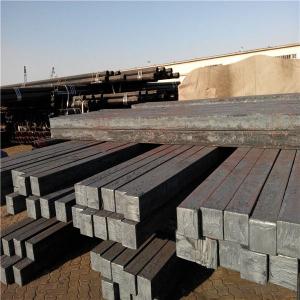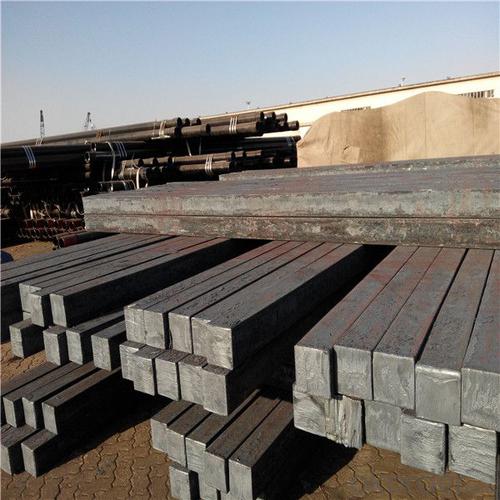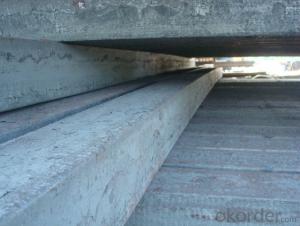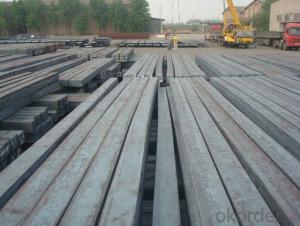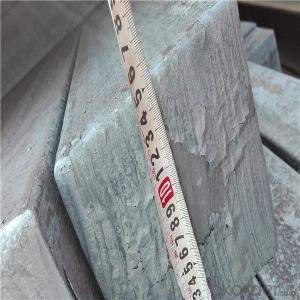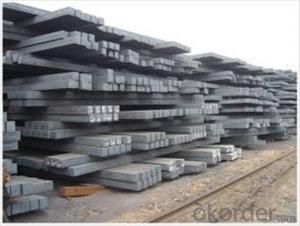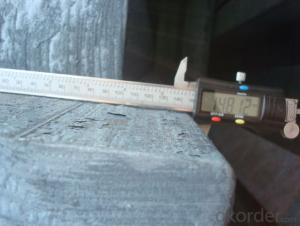Square Steel Billets hot sale Q275 grade
- Loading Port:
- Tianjin
- Payment Terms:
- TT OR LC
- Min Order Qty:
- 1000 m.t.
- Supply Capability:
- 15000 m.t./month
OKorder Service Pledge
OKorder Financial Service
You Might Also Like
Specification
Steel billet
(ingot) by cogging or breakdown of semifinished products, is the raw material of all kinds of steel mill.
Billet section of square, round, flat, rectangular and abnormity of several kinds of, mainly related to the
shape of rolled products.
Rectangular billet continuous casting billet and mainly general carbon steel, low carbon low silicon cold-rolled material, high quality carbon structural steel, high strength low alloy steel, special steel, etc.
The billet is mainly divided into two kinds from the shape:
Slab: cross section width and height of the ratio of the larger, mainly used for rolling plate.
Gade:
Standard | C(%) | Mn(%) | S(%) | P(%) | Si(%) |
Q195 | ≤0.12 | ≤0.50 | ≤0.040 | ≤0.035 | ≤0.30 |
Q235 | ≤0.20 | ≤1.40 | ≤0.045 | ≤0.045 | ≤0.35 |
Q275 | ≤0.22 | ≤1.50 | ≤0.045 | ≤0.045 | ≤0.35 |
20MnSi | 0.17-0.25 | 1.2-1.6 | ≤ 0.050 | ≤ 0.050 | 0.40-0.80 |
3SP | 0.14-0.22 | 0.40-0.85 | ≤ 0.050 | ≤ 0.040 | 0.05-0.15 |
5SP | 0.28-0.37 | 0.50-1.00 | ≤ 0.050 | ≤ 0.040 | 0.15-0.30 |
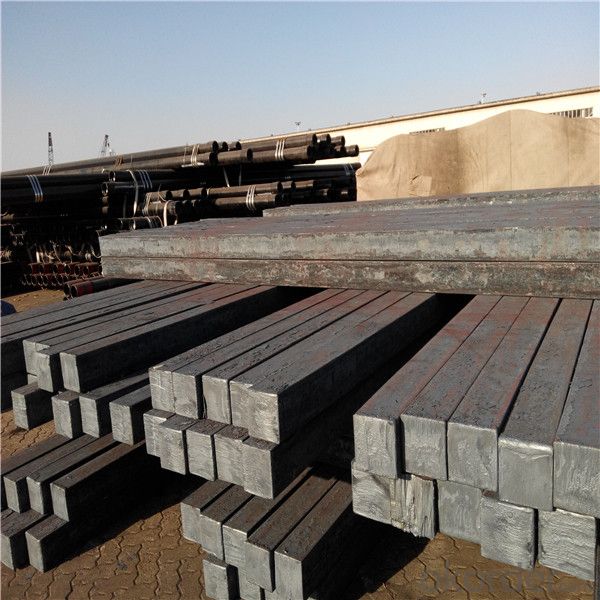
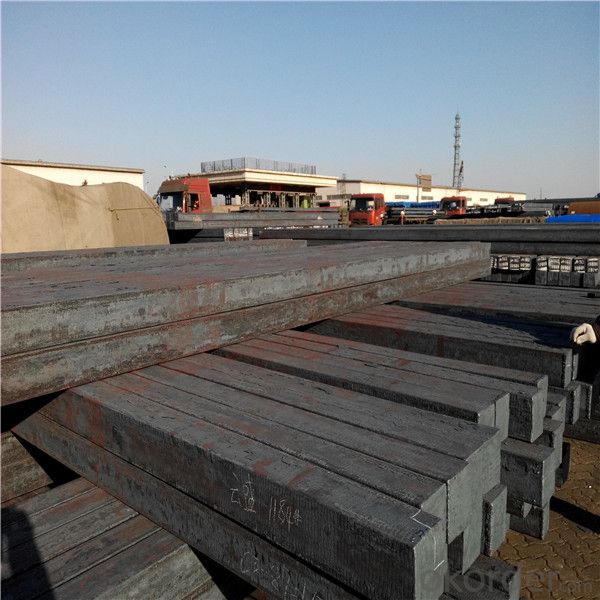
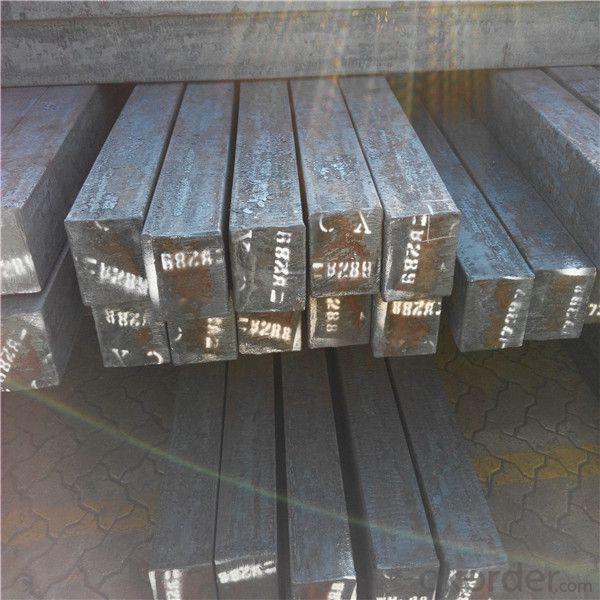
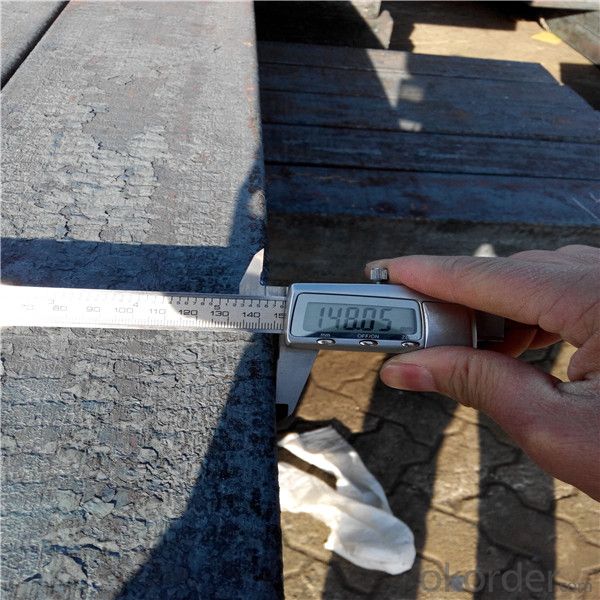
Our service :
We have a plant and professional team to provide our best service, from the start of production until the
loading into the vessel, we have a complete quality follow up procedure, to assure our products arrives to the customer with satisfaction. Welcome new and old customers
to contact us for future business relationships! We will give you a surpise price.
Packing :
Within 30 days
1.Standard export package
2.In bundles with steel strips
3.As the requirements of the customers
FAQ:
Q: What is payment terms?
A: FOB 30% T/T IN ADVANCE AS DEPOSIT AND 70% T/T BEFORE SHIPMENT
CIF and CFR 30% T/T IN ADVANCE AS DEPOSIT AND 70% T/T AS THE COPY OF B/L OR L/C AT SIGHT
Q:How to guarantee the quality of the products?
A:We have established the international advanced quality management system,every link from raw material
to final product we have strict quality test;We resolutely put an end to unqualified products flowing into the market.
At the same time, we will provide necessary follow-up service assurance.
Q:How long can we receive the product after purchase?
A :In the purchase of product within three working days, We will arrange the factory delivery as soon as possible.
The pecific time of receiving is related to the state and position of customers.
- Q: How are steel billets used in the production of automotive fuel systems?
- Steel billets are used in the production of automotive fuel systems as they are melted and shaped into various components such as fuel tanks, fuel rails, and fuel pump housings. These billets provide the necessary strength, durability, and corrosion resistance required for these critical components, ensuring the safe storage and delivery of fuel in vehicles.
- Q: What are the different types of surface defect detection equipment for steel billets?
- There are various types of surface defect detection equipment available for steel billets. These equipment are designed to identify and analyze defects on the surface of steel billets, ensuring that only high-quality products are used in various applications. Some of the different types of surface defect detection equipment for steel billets include: 1. Ultrasonic Testing (UT): UT equipment uses sound waves to detect surface defects in steel billets. It emits high-frequency sound waves that penetrate the material and reflect back when they encounter any surface irregularities. This method helps identify cracks, voids, and other defects on the surface. 2. Eddy Current Testing (ECT): ECT equipment uses electromagnetic induction to detect surface defects in steel billets. It works by passing an alternating current through a coil, generating a magnetic field that interacts with the conductive material of the billet. Any surface defect or irregularity will cause a change in the magnetic field, which can be measured and analyzed. 3. Magnetic Particle Inspection (MPI): MPI equipment uses magnetic fields and iron particles to detect surface defects in steel billets. The billet is magnetized, and iron particles are applied to its surface. These particles will gather around any surface defect, creating visible indications that can be easily identified and evaluated. 4. Visual Inspection: Visual inspection equipment involves the use of cameras, lasers, and other optical devices to detect surface defects in steel billets. These devices capture images or videos of the billet's surface and allow inspectors to identify any irregularities or defects visually. 5. Thermographic Testing: Thermographic equipment uses infrared cameras to detect surface defects in steel billets by measuring the temperature variations. Any defect will cause a difference in heat transfer, resulting in distinct thermal patterns that can be detected and analyzed. 6. X-ray Inspection: X-ray inspection equipment uses X-ray radiation to penetrate the steel billet and detect internal and surface defects. It provides detailed images that allow inspectors to identify cracks, voids, and other defects that are not visible to the naked eye. Overall, these different types of surface defect detection equipment for steel billets offer a range of methods to ensure the quality and integrity of the billets, enabling manufacturers to deliver high-quality steel products to various industries.
- Q: What are the different types of steel billet inspection techniques?
- There are several different types of steel billet inspection techniques used in the industry. These techniques are employed to ensure the quality and integrity of the steel billets before they are further processed or used in manufacturing processes. Some of the commonly used inspection techniques include: 1. Visual Inspection: This is the most basic and commonly used technique where inspectors visually examine the steel billets for any surface defects, such as cracks, pits, or deformities. It is a quick and effective method for detecting obvious visual defects. 2. Dimensional Inspection: In this technique, the dimensions of the steel billet are measured using various tools, such as Vernier calipers or micrometers. This helps ensure that the billets meet the required dimensional specifications. 3. Ultrasonic Testing: Ultrasonic testing involves the use of high-frequency sound waves to detect internal defects or inconsistencies in the steel billets. This technique can identify defects like cracks, voids, or inclusions that may not be visible to the naked eye. 4. Magnetic Particle Inspection: This technique involves the application of magnetic fields to the steel billets and the use of iron particles or magnetic ink to identify surface and near-surface defects. It is particularly effective in detecting defects like cracks or discontinuities. 5. Eddy Current Testing: Eddy current testing utilizes electromagnetic induction to detect surface defects and measure the conductivity or thickness of the steel billets. It is a non-destructive technique that can identify defects like cracks, corrosion, or variations in material thickness. 6. Radiographic Testing: This technique involves the use of X-rays or gamma rays to inspect the internal structure of the steel billets. It can detect defects like inclusions, voids, or improper internal structure. 7. Dye Penetrant Inspection: Dye penetrant inspection is used to detect surface defects by applying a dye or fluorescent liquid to the steel billets. The dye seeps into any cracks or discontinuities, and excess dye is then wiped off, leaving only the dye trapped in the defects, which can be easily identified under UV light. These are some of the commonly used steel billet inspection techniques. Each technique has its own advantages and limitations, and the choice of technique depends on various factors such as the type and size of the billets, the level of defect detection required, and the budget constraints.
- Q: How are steel billets used in the manufacturing of construction formwork?
- Steel billets are used in the manufacturing of construction formwork as they are often shaped and molded into various components, such as beams or columns, that provide essential structural support. These billets are strong and durable, ensuring the formwork can withstand the weight and pressure of poured concrete. Additionally, their malleability allows for customization, enabling the formwork to be precisely designed to meet the specific requirements of each construction project.
- Q: Are steel billets used in the production of sporting goods?
- Yes, steel billets are commonly used in the production of sporting goods. They are often utilized to create various components such as the shafts of golf clubs or the frames of bicycles. Steel billets provide durability and strength to these sporting goods, making them suitable for intense physical activity.
- Q: How do steel billets contribute to the manufacturing of automotive components?
- The manufacturing of automotive components heavily relies on steel billets, which are semi-finished metal pieces. These billets serve as the initial material for producing various automotive parts. Forging is a key process in which steel billets play a crucial role. It involves shaping the metal billets under high pressure and temperature, typically using a hammer or press. This technique enhances the strength, durability, and reliability of the components, making them suitable for the challenging conditions of the automotive industry. Engine components, such as crankshafts, connecting rods, and piston rods, also benefit from the use of steel billets. These parts require high strength and resistance to wear and tear. Starting with high-quality steel billets ensures that the resulting components possess the necessary mechanical properties to withstand the stresses and forces experienced by the engine during operation. Steel billets are additionally utilized in the production of suspension components, including control arms and stabilizer bars. These components are responsible for maintaining vehicle stability, handling, and comfort. By using steel billets, the suspension components can withstand the heavy loads and impacts encountered on the road, delivering a smooth and safe driving experience. Moreover, steel billets contribute to the manufacturing of safety-related automotive components. For example, they are used in producing structural components like chassis frames and body reinforcements. These components are vital for protecting occupants in the event of a collision or impact, and steel billets provide the necessary strength and rigidity to ensure their effectiveness. In summary, steel billets are an essential element in the manufacturing of automotive components. They enable the production of robust, long-lasting, and dependable parts, ensuring the overall performance, safety, and longevity of vehicles. Automotive manufacturers can meet the industry's demanding requirements and deliver high-performance vehicles to consumers by starting with high-quality steel billets.
- Q: What are the different types of straightening methods used for steel billets?
- There are several types of straightening methods used for steel billets, including rotary straightening, roller straightening, and hydraulic straightening. Rotary straightening involves rotating the billet while applying pressure to straighten it. Roller straightening uses a series of rollers to apply pressure and straighten the billet. Hydraulic straightening uses hydraulic force to straighten the billet. Each method has its own advantages and may be chosen based on the specific requirements of the steel billet.
- Q: How are steel billets used in the manufacturing of oil and gas pipelines?
- Steel billets are an essential component in the manufacturing of oil and gas pipelines. They serve as the raw material from which pipes are derived. Steel billets are essentially semi-finished steel forms that are cast into specific shapes and sizes for further processing. To manufacture oil and gas pipelines, the first step involves melting steel scrap and other alloys in a furnace to create molten steel. This molten metal is then poured into molds or continuous casting machines to produce steel billets. These billets are typically cylindrical in shape and can vary in length and diameter depending on the desired specifications of the pipeline. Once the steel billets are cooled and solidified, they undergo various shaping processes, such as hot rolling or extrusion, to transform them into seamless or welded pipes. Hot rolling involves passing the billets through a series of rollers that apply pressure and heat to shape them into the desired pipe form. On the other hand, extrusion involves forcing the billets through a die to create the pipe shape. The resulting pipes are then further processed through techniques like heat treatment, machining, and coating to enhance their strength, durability, and corrosion resistance. These processes ensure that the pipes can withstand the harsh conditions and pressures encountered in the oil and gas industry. Overall, steel billets play a crucial role in the manufacturing of oil and gas pipelines as they provide the starting material for creating the pipes. Their strength, versatility, and ability to withstand extreme conditions make them an ideal choice for constructing pipelines that transport oil and gas across long distances.
- Q: What are the different surface defects that can be found in steel billets?
- Some common surface defects that can be found in steel billets include cracks, scale, pits, inclusions, and surface roughness.
- Q: How are steel billets used in the production of flanges?
- Steel billets are an essential raw material used in the production of flanges. Flanges are critical components that connect pipes, valves, and other equipment in various industrial applications, such as oil and gas, petrochemicals, and power plants. To manufacture flanges, steel billets are first heated to a high temperature to make them malleable and easy to shape. They are then passed through a series of rolling mills, where they undergo hot rolling or forging processes. This helps to shape the steel billets into the desired flange dimensions, including outer diameter, inner diameter, and thickness. During the rolling or forging process, the steel billets are subjected to immense pressure, which helps to align the steel grains and improve the structural integrity of the flanges. This ensures that the flanges can withstand high pressures, temperature variations, and other challenging operating conditions that they may encounter during their service life. Once the initial shaping is complete, the flanges are further processed to refine their surface finish. This may involve machining, grinding, or polishing, depending on the specific requirements of the flange design. These additional processes help to achieve a smooth and precise surface, ensuring proper sealing and connection when the flanges are installed in a piping system. After the surface finish is refined, the flanges undergo various quality control checks, including dimensional inspections, mechanical testing, and non-destructive testing. These tests ensure that the flanges meet industry standards and specifications, guaranteeing their reliability and performance. In summary, steel billets are crucial in the production of flanges as they provide the raw material necessary for shaping and forming these essential components. The combination of high-temperature processing, rolling or forging, and subsequent finishing processes helps to create flanges that are strong, durable, and capable of withstanding demanding conditions in industrial applications.
Send your message to us
Square Steel Billets hot sale Q275 grade
- Loading Port:
- Tianjin
- Payment Terms:
- TT OR LC
- Min Order Qty:
- 1000 m.t.
- Supply Capability:
- 15000 m.t./month
OKorder Service Pledge
OKorder Financial Service
Similar products
Hot products
Hot Searches
Related keywords
